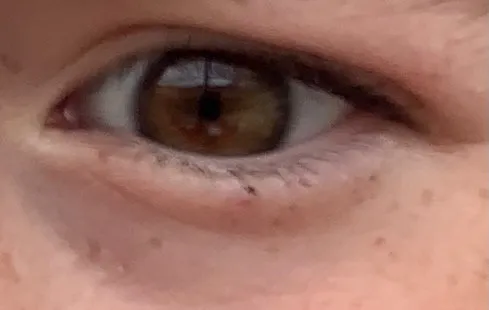Frequently Asked
Questions about
EMDR Therapy
Jun 15, 2022 | By: Hope for the Journey
In a previous blog, we introduced and broke down the phases of Eye Movement Desensitization and Reprocessing (EMDR) therapy. The purpose of that was to outline the process of EMDR so that you have a better understanding about what to expect as a client. Check it out here. This blog goes beyond that and answers questions that you may still be wondering about the use and effectiveness of EMDR. In short, why is EMDR therapy worth your time, effort, and money?



Can EMDR Treat Other Mental Health Issues than PTSD?
Yes! Many of the symptoms that cause mental, emotional, relational, and/or physical suffering are linked to memories that are flawed or unhelpful. Memories that contain similar information; senses, thoughts, images, beliefs, etc. can become linked to form a memory network.
Think of a spider web. It starts with a single thread. That thread is then attached to another thread and then another until eventually a whole strong web is formed. When a person experiences something that is scary, life-threatening, or even just uncomfortable, that web or memory network can become linked together in ways that are unhealthy. This can cause someone to feel depressed, angry, or anxious. It may even lead to reckless behaviors or negative thoughts. These symptoms are displayed throughout various mental health concerns including but not limited to;
- Phobias (Ie. extreme fear of needles or flying, etc…)
- Addictions
- Problems in relationships
- Anxiety disorders
- Depressive disorders
- Eating disorders
- Physical pain or discomfort
- Feeling disconnected from your thoughts or surroundings
- Struggles with low self-esteem or low self-worth
EMDR allows you to recognize and reprocess (or “re-store”) a memory that is linked to a memory network. After a memory is reprocessed it becomes linked to an “adaptive” or more helpful memory network. Therefore, the use of EMDR is not limited to only treating trauma or traumatic memories.
However, the use of EMDR to treat certain conditions may require something more than just standard EMDR. For example, an additional protocol or components of other treatment types might be needed. Often, these alternative ways of providing EMDR require the therapist to be additionally trained. Clinicians who are EMDR Certified have gone beyond the basic training requirements and regularly attend ongoing training. Always feel free to ask your therapist what their experience is in using EMDR with your presenting concern.
Can EMDR be Done with Online Therapy?
Yes! In this new world of telehealth and video therapy, EMDR has also been modified for virtual use. EMDRIA (EMDR International Association) has released official guidelines for online EMDR Therapy. It looks and feels similar to how it would work in person. The eight phases are all going to remain the same. However, the options for bilateral stimulation will be a bit different. Bilateral stimulation refers to something that you can see, hear, or feel across your body in a pattern that goes back and forth. Since you won’t be in the same physical space as your therapist, you likely will not be directed to look, listen, or touch something in their office.
The online alternatives include:
Online platform that offers modes of visual or auditory stimulation. Your therapist may have access to a platform where you get a link to a confidential and HIPAA-compliant EMDR “room.” You can still see your therapist on the video call, and, at the same time, you will see a blank screen. Your therapist will be able to add a visual object to the screen and move it back and forth so that your eyes can follow it. If you prefer to listen to something instead, there are options for sounds that your therapist can turn on at regular intervals. Examples of these platforms include: RemotEMDR, EMDRemote, BilateralBase as well as others. The particular features on each of these platforms vary, and we do not endorse one over any of the others.
Butterfly hug: You may find that you prefer a method of bilateral stimulation where you touch something OR your therapist does not have access to an additional online platform. In these situations, your therapist can teach you to do the butterfly hug on yourself. It is a form of bi-lateral stimulation where you end up tapping the area around your clavicle and collarbone at a speed and intensity that feel comfortable to you. You interlock your thumbs like a butterfly and then alternate your tapping with each hand.
What Else Should I Know About Online EMDR Therapy?
When you experience EMDR virtually, you may spend longer in the preparation phase. Your therapist wants to make sure that you can successfully self-soothe and shift moods from distressed to calm. In essence, they want to make sure that you can tolerate your emotions, particularly difficult ones. It is harder for them to make this determination since they can’t see all of your non-verbal cues on screen. Examples of this include your body posture and body movements. Your therapist may not be able to see if you’re tensing up. Therefore, it is important that you feel comfortable enough with your therapist to share things like that so that it can be properly addressed.
One positive of doing EMDR virtually is that you are already at home–ideally in your comfort zone. If you become distressed or overwhelmed, you can ground yourself in the safety of your own space. You can even have your beloved pet right next to you. Since EMDR sessions can also be tiring, there’s an added benefit of being close to your bed or couch and not having to drive home.
Can I do EMDR AND Traditional Talk Therapy?
In general, yes. EMDR can be intertwined with other methods of talk therapy. However, once you have started the assessment phase of EMDR, your therapist will likely encourage you to continue to move through the desensitization, installation, and body scan phases. This is because the unhelpful (maladaptive) memory network has already been activated. Your brain is going to continue to search for helpful (adaptive) information. The structure of EMDR will guide and support you as you begin to notice new insights and connections as opposed to keeping you feeling stuck.
Think of the metaphor of driving through a tunnel. You are going to get through to the other side if you continue to drive through the tunnel as opposed to stopping in the middle. If you stop EMDR and switch to Talk Therapy midway, it just delays the time it takes to get you to a place that feels better.
If you have a current therapist who is not EMDR trained, it is possible to seek out an EMDR trained therapist to do EMDR also. You can then do EMDR along with the other ongoing therapy models. In that situation, it would be best practice to allow your ongoing therapist to consult with your EMDR therapist so that they can work together to make sure that your goals are being met.
How Can I Tell if I’m Doing EMDR Therapy Right?
This question gets asked A LOT- particularly by those individuals who are just starting out with EMDR therapy. Everyone responds to EMDR differently, so there is no one answer as to what “should be” happening. When I’m facilitating EMDR, I encourage my clients to release the “shoulds” and simply notice what is coming up for them. What are you thinking?, seeing?, feeling in your body?, etc.
The tell-tale sign about whether EMDR is “working” is by checking in with how you are feeling. In EMDR, we call this checking the subjective unit of disturbance (SUD). At the beginning of the reprocessing, you report to your therapist how disturbing the target memory is for you on a scale of 0-10. Ideally, as the reprocessing continues, the SUD should become lower. Sometimes, it will go up briefly when you get to a harder part of the memory, but ultimately it should come down to 0. This is a sign that you are “done” with that memory.
Another indicator that your brain is doing the work that it’s supposed to do is through language of change. You display “language of change” when you can describe something different that you notice that you did not notice before. If anything is changing for you- anything at all- then it’s working. Your brain is doing it “right.”
Can Children Do EMDR?
Yes. EMDR has been shown to be effective with children in a similar manner to adults. However, when working with children, the therapist may adjust parts of each phase to match the child’s comfort and developmental level. An example of this is asking a child to gauge their disturbance level (or SUD) through pictures instead of using the 0-10 scale. Parents should be educated on the process of EMDR so that they can be on the lookout for additional thoughts, feelings, dreams, or insights that may come up for their child in between sessions and be able to support them through these.
In Closing
EMDR is a very useful, effective treatment for a wide variety of issues and is easily adapted to your needs. If you believe that you or someone you know would benefit from EMDR therapy, please reach out to us at Hope For The Journey. We have therapists with immediate in-person and online availability. We would be happy to provide you with additional information and join you on your healing journey. Give us a call today to speak with our Care Coordinator.
Hope For The Journey is a counseling group in Texas. We help kids, adults, parents, and partners across Texas to heal and thrive after trauma (particularly sexual trauma) with counseling that works. We also educate the community in all things trauma and have a Trauma Sensitivity Certification Training for other helpers including physical therapists, massage therapists, chiropractors, and more. We are an anti-racist, LGBTQIA+ friendly group who welcomes any and all to their healing journey.
